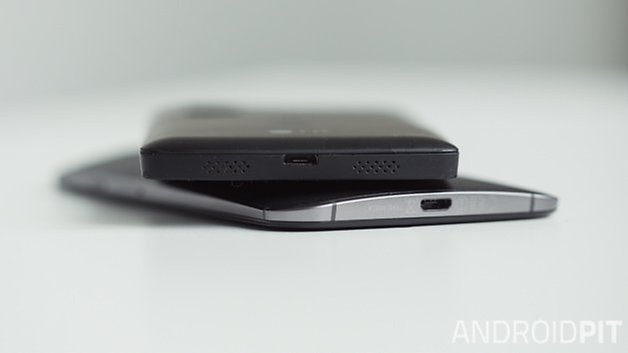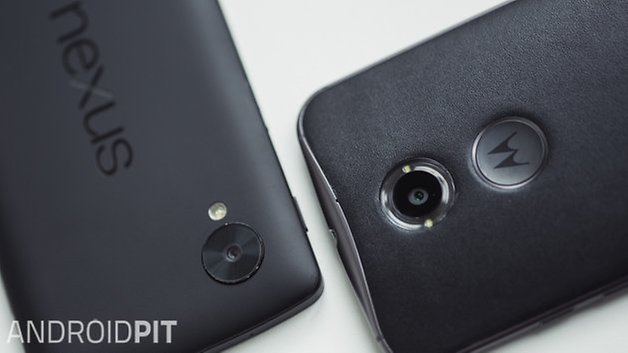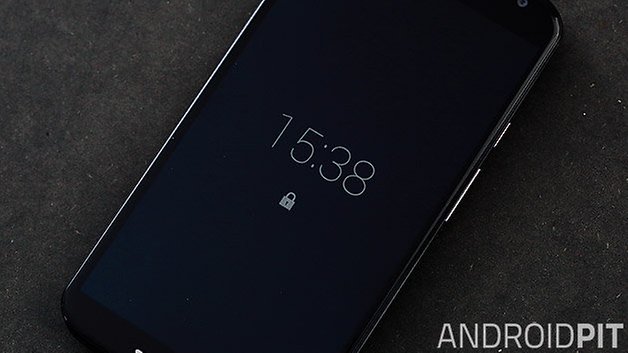Moto X (2014) vs. Nexus 5: Battle of Android

Motorola launched the second generation of the Moto X recently and it draws more than a little bit of inspiration from the Nexus 5. We are going to take a little closer look at these two devices and see whether newer translates to better.

Design
The new Moto X has an aluminum frame around the edges of the device. While both the Nexus 5 and the Moto X has a polycarbonate backing, the new Moto X has a noticeably more curved back and also a recessed camera. As well, the new Moto X can be modified via the Moto Maker website if you live in a country that supports it (USA, Germany, and France right now) and can replace the polycarbonate with another material, such as bamboo.

The Nexus 5’s entire body is made of polycarbonate and both the power and volume buttons are ceramic. The back is slightly curved and the camera lens sticks out a bit of the housing.

Both devices do have quite a high quality of design build, but the new Moto X wins some style points for the incorporation of an aluminum frame which adds a touch of class to the new smartphone.
- Moto X vs. Nexus 5: battle of the Google devices
Display
The Nexus 5 and the new Moto X are not just different in the size of the display on each device, but also the technology built into the displays. On the Moto X, there is an AMOLED display that helps conserve more energy since the black areas on the screen are actually non-active pixels and provides a noticeable steeper viewing angle. However, some of the downsides of AMOLED is the fact that you can get some graininess in monochrome and darker settings.

The Nexus 5 uses LCD technology in its display and offers bold colors that are super saturated and as such, the display is noticeably clearer. Unlike the Moto X though, there is a reduction in the viewing angle.
Software
The software in both devices is almost identical: while the new Moto X mixes pure Android with a few small tweaks and extra software, the Nexus 5 brings a pure Android experience. The advantage for the Nexus 5 is that it will be at the forefront of new Android updates, even before the new Moto X.
Since the Nexus 5 is running a pure version of Android, many extra features that are wanted or missed will need to be sourced and downloaded from the Google Play Store. Despite lagging a little behind the Nexus 5 on software updates, the Moto X does the best of both worlds by providing unique software features in an Android setting without having to rely on a ton of bloat ware.
Extras
The new Moto X has infrared motion sensors built into the device. These are used to recognize when someone moves his or her hand over the top of the device or whether you’ve given the device two shakes to activate the camera. The Nexus 5 doesn’t have really any extra sensors or hardware built into the device.

Camera
The new Moto X camera has a resolution of 13-megapixels in its camera compared to the Nexus 5’s 8-megapixel camera.
The Moto X camera isn’t quite as impressive as the number behind it seem to indicate. There’s no manual mode and the camera doesn’t really perform that great: it struggles to focus and doesn’t produce quite as rich colors as you would expect. As well, there’s no timer, no manual mode, and no optical image stabilization at the moment. While these features may be fixed or added in a subsequent software update by Motorola, we’re disappointed with the results at the moment.
The Nexus 5 isn’t much better, but has been improved since its initial release with some software updates that have fixed some of the issues that were present at its initial launch. The camera does perform well in lowlight images in terms of sharpness and graininess. The Nexus 5 does have an optical image stabilizer on board that helps with the quality of images taken with the device. A more detailed analysis of the both cameras can be found in our review of the particular devices.
Technical Specifications
| New Moto X | Nexus 5 | |
|---|---|---|
| System | Android 4.4.4 | Android 4.4.4 |
| Screen | 5.2 inches, AMOLED, 1920 x 1080 pixels, 424 ppi | 4.95-inch LCD, 1920 x 1080 pixels, 445 ppi |
| Processor | Snapdragon 801, Quad-Core, 2.5 GHz | Snapdragon 800, Quad-Core, 2.3GHz |
| RAM | 2 GB | 2 GB |
| Internal memory | 16/32 GB | 16/32 GB |
| Battery | 2300 mAh | 2300 mAh |
| Camera | 13 MP (rear), 2 MP (front) | 8 MP (rear), 1.3MP (front) |
| Connectivity | HSPA, LTE, NFC, Bluetooth 4.0, Wi-Fi | HSPA, LTE, NFC, Bluetooth 4.0, Wi-Fi, Qi |
| Dimensions | 146.4 x 70.6 x 9.4 mm | 137.84 x 69.17 x 8.59 mm |
| Weight | 144 g | 130 g |
| Price | 349 / 399 USD | Starting at 499 USD. |
Battery
A look at the technical specifications show that both devices sport the same sized battery inside and it really doesn’t raise any eyebrow. Coming in at 2300 mAh, the battery is just enough for power users to get through a day before having to recharge on both devices. However, the Moto X, with its AMOLED display, does last a little bit longer in endurance tests.
Price
The Nexus 5 is still currently available on the Google Play Store for either 349 USD for the 16 GB version of 399 USD for the 32 GB version. With the possible release of the Nexus 6 on the horizon, we could see these prices slashes as Google may be looking to rid itself of its remaining stock.
The new Moto X starts at 499 USD for the 16 GB version and goes up from there.

Conclusion
The new Moto X gains a bunch of points for its new design, software functions, and reasonable price for a brand new device. On the other hand, the Nexus 5 does provide an exceptional display, takes better photos out of the two, and is at the head of the line for Android software updates. Depending on what you’re looking for, Motorola might be the way to go as the company is not only behind the latest Moto X, but will most likely be the company bringing the new Nexus 6 to life.
(originally by Daniel Carrara of AndroidPIT.com.br)




Maybe I'll stay with my nexus 5, and I also want to add that Moto Maker Now is now available in Mexico and the entry price of the new Moto X is 7,999 pesos